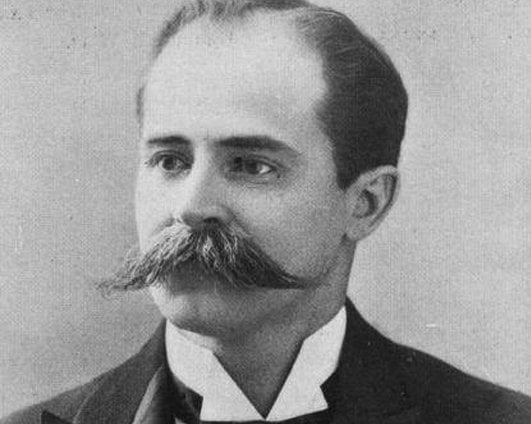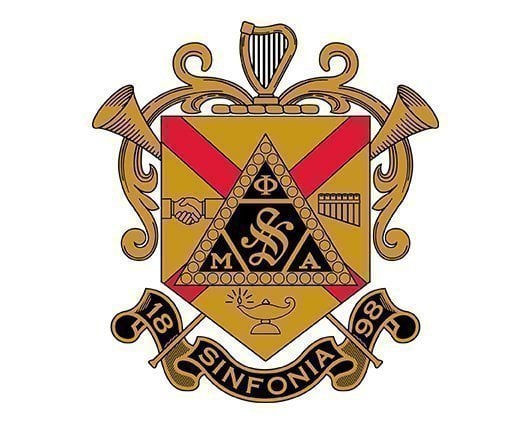
A century ago, the world was changing rapidly, and both the Fraternity and the United States were facing many significant challenges. In 1917, America entered World War I, and the Fraternity was facing a crisis. Chapters had been delinquent in paying per capita tax and filing reports. Chapters and alumni had received copies of Phi Mu Alpha Annuals without paying for them. Some chapters had even gone inactive.
The 1917 Convention was canceled in part by the effects of the turmoil of World War I, and in the wake of that year, the Fraternity’s finances and business operations were in disarray. At the time, Supreme Historian George Leighton reported that the national treasury was almost insolvent.
1918 brought about the influenza pandemic that would kill approximately 675,000 Americans. In April of that same year, Supreme President F. Otis Drayton resigned suddenly after accepting an appointment to a government post. Burleigh Jacobs, the Supreme Vice President, reluctantly assumed the office of Supreme President until a time that a successor could be elected. World War I ended with the loss of approximately 117,000 soldiers and not much had improved for the Fraternity’s finances, resulting in the cancellation of the 1918 convention.
Despite the heavy burdens forced upon the Fraternity during those difficult years, the Sinfonia endured.
The 1919 Convention was held, the first Convention in nearly three years, and a change in leadership occurred, as both the Supreme President and the Supreme Secretary-Treasurer declined reelection to their roles. Chester R. Murray of Zeta chapter was elected Supreme President, and Charles E. ‘Casey’ Lutton of Iota chapter was elected to his first term as Supreme Secretary-Treasurer, an office he was destined to hold continuously until his retirement thirty years later.
As crisis seemingly subsided, a new decade would dawn. The 1920s brought on much more strife. The Ku Klux Klan was terrorizing the nation, and the Wall Street bombing became the largest terrorist attack the country had seen to date. Yet at the same time, signs of hopeful and historic change began to emerge, as women were granted the right to vote, and the first commercially licensed radio station began broadcasting, premiering with live results of the presidential election.
For Sinfonia, the most significant change occurred on December 26, 1920. On this day, Ossian Everett Mills, the “Father of Sinfonia,” died of pneumonia at the age of 64. He had been ill for only a few days, and “his death came as a great shock to his associates and assistants to all of whom was familiar the story of the great service which he rendered in the earlier years of the school” and which he “unremittingly continued” during his latter years.*
Life, Death, and Legacy

Ossian Everett Mills was born in 1856 in Thompson, Connecticut, and was the eldest son of seven children in a musically-inclined family. As a young man, he attended the Woodstock Academy, which emphasized moral character and an active life of service. By 1879 Mills had moved to Boston. He studied voice as a tenor at the New England Conservatory, where he would be employed eventually as the bursar. While a student at the NEC, he sang with the celebrated contralto, Carrie Cleveland Carper. They were married in 1883 and had one child, Homer, in 1888.
In Boston, Mills was involved in the Christian Endeavor Society, which emphasized prayer meetings and visits to the sick. Mills began holding prayer meetings at the Conservatory in 1886, and around the same time, he began organizing groups of people on Easter and Christmas Sundays to minister to the sick in the hospitals of Boston with flowers and music. Over the years this “Song and Flower Mission” gained a reputation as one of the most generous and beautiful of charities, and was awaited with great expectancy by the patients and nurses. This was the first large-scale and ongoing use of music to aid the sick in America.
These “Song and Flower Missions” were revived by the Fraternity following the Centennial Celebration in 1998, and renamed the ‘Ossian Everett Mills Music Mission’ to honor the charitable legacy of Ossian Mills. Since the reintroduction of our musical philanthropy, the Brothers of Phi Mu Alpha have visited countless hospitals, nursing homes, and senior centers all over the country to play instruments or sing songs to help lift the spirits of those in need.
It was Ossian Mills who inspired the students of the New England Conservatory to form the Sinfonia Club in 1898. At the club’s first meeting on October 6, 1898, he was elected an Honorary Member and regarded as its “Founder.” The Sinfonia Club soon became national in 1900, and would grow to become the first and largest fraternal society in music in America. Recognizing the important role he had played in the founding of the order, and the positive influence he continued to have on Sinfonia, the fledgling Fraternity elected Ossian Everett Mills as Supreme President at the First Annual Sinfonia Convention in Boston in 1901.
In 1902, Mills was given the honor of being designated as “Grand Supreme President for Life,” and would serve once again as Supreme President from 1904-1905. Ossian Mills remained highly involved in the administration of the Fraternity throughout his life. He wrote that the Sinfonia’s “business is the making of men,” and that the Fraternity’s purpose is the “betterment of the young men musical students in America” by making them “physically, mentally, morally, spiritually” “stronger, cleaner, purer – in fact, more worthy men than when they enter.”
Ossian Everett Mills died at his home in Wellesley, Massachusetts on December 26, 1920. Several years after his death, Sinfonia erected a Memorial to its Revered Founder, which represented his outstanding characteristics with these words: “Sacrifice, Secret Zeal, and Truth.”


“Resolutions Adopted by Alpha Chapter
On the Death of Brother Mills”WHEREAS, We have lost by death our brother, Ossian E. Mills, Founder and Honorary Supreme President of Phi Mu Alpha, Sinfonia, a man whose sterling character and unselfish service had made him beloved of all Sinfonians:
Be it Resolved, That we the members of Alpha Chapter, Phi Mu Alpha, Sinfonia, express our profound sorrow at the great loss of Brother Mills from Alpha Chapter and the Fraternity at large, which will always remain a living monument to his service and vision.
Be it further Resolved, That we extend our deepest sympathy to the bereaved family of Brother Mills with the hope that their sorrow will be lightened by the knowledge of the fact that his work among us still lives.
At the fiftieth anniversary Convention in 1948, Alpha Chapter presented a speaker’s gavel to be used at all future National Convention meetings. The presentation was made by Past-Supreme Presidents F. Otis Drayton and Percy Jewett Burrell. Brother Drayton described the gavel as being made of wood taken from the original rostrum of the Alpha Chapter room and from the original wood of the main mast of the United States frigate “Constitution,” known as “Old Ironsides” (1797), which had been restored and was docked in Boston Harbor.
Drayton said it was the hope of Alpha Chapter that the symbolism would represent the ideals of Sinfonia’s founders, and would impart the spirit of enduring strength symbolized by “Old Ironsides.” Today, in this troubled year, the gavel is an apt reminder of the founding values of our Brotherhood, first promulgated by Ossian Mills, and of the strength of our nation.

At this time of great challenges in our nation, let us remember that the circumstances we endure, individually and collectively, are temporal, but the spiritual ideals of our Brotherhood are eternal. It is from these ideals that we gather the strength and courage to meet the challenges of the world.
Ossian Everett Mills was an extraordinary man of great activity and service, whose life and message inspired those who knew him, and continue to inspire thousands today. As every great movement is the lengthening shadow of some great man, the Sinfonia is the “product of a personality” – that of ‘Father’ Mills – and remains a living monument to him, perpetuating his ideals and his work.
Requiescat in pace
Sources:
Mongiovi, John Alan. Ossian Everett Mills: a Documentary Biography. Evansville, IN: Sinfonia Press, 2018.
Underwood, T. Jervis. A Centennial History. Evansville, IN: Phi Mu Alpha Sinfonia, 2018.
*The Conservatory Bulletin 2, no. 12 (January 1921): 4.
Learn More About the Father of Sinfonia

Ossian Everett Mills: A Documentary Biography, written by former National President John Mongiovi, shares the story of the life, work, and ideals of the Founder and “Father” of the Sinfonia Fraternity of America. This comprehensive work presents all available materials pertaining directly to Mills’ life and work.
It considers his family and early education, his studies and employment at the New England Conservatory, his marriage and family life, and his personal qualities and reputation. Mills’ participation in the Temperance Movement, prayer meetings, and the Christian Endeavor Society are examined as influences on the development of his Song and Flower Mission and Sinfonia.
This Biography provides a comprehensive record of Mills’ efforts to support the Sinfonia Club, his development of the national Fraternity, and the appellations and honors accorded to him. Included are annotated versions of the seven writings of Ossian Mills, written for Sinfonia between 1902 and 1915.





